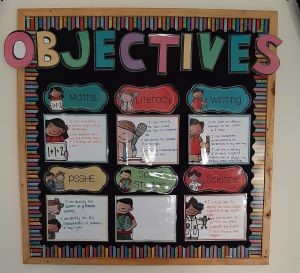The Importance of Healthy Teacher/Student Relationships
How can we help our students to learn? According to educational research, two of the strongest factors in student learning relate back to the teacher/student relationship. This shouldn’t surprise us, since we know that we are created as relational beings in the image of a relational God.
According to researcher John Hattie, healthy teacher/student relationships have a strong positive effect on student learning[1]. When students believe their teachers know and care for them as individuals, they are more willing to take risks and make mistakes and to see these mistakes not as failures but as opportunities to learn. A student who knows his teacher cares for him is likely to work harder and aim higher. Conversely, a student who believes that her teacher sees her as difficult or “a problem” (whether this perception is true or not) will be less likely to fully engage in the learning process.
 Even more impactful to learning than a positive teacher/student relationship is teacher credibility. When students believe that they can learn from their teachers, it positively impacts learning almost twice as much as healthy relationships [2]. What builds teacher credibility? Foremost is trust. Students need to believe that their teachers know them as individuals and “have their best academic and social interests at heart.[3]” In addition to trust, students need to believe their teachers are competent in both knowledge of content and practice of pedagogy, that they are passionate about their teaching and why it is important, and that they will be reliably accessible and relatable.
Even more impactful to learning than a positive teacher/student relationship is teacher credibility. When students believe that they can learn from their teachers, it positively impacts learning almost twice as much as healthy relationships [2]. What builds teacher credibility? Foremost is trust. Students need to believe that their teachers know them as individuals and “have their best academic and social interests at heart.[3]” In addition to trust, students need to believe their teachers are competent in both knowledge of content and practice of pedagogy, that they are passionate about their teaching and why it is important, and that they will be reliably accessible and relatable.
What does all this mean for teachers? Here are some ideas that ring true for both physical and virtual classrooms.
Call students by name. Just as the Lord spoke to Israel in Isaiah 43:1, we should call our student by name and let them know they are ours, that we know them and care for their needs. This can be done when addressing students, but it can also be incorporated in more subtle ways such as by adding student names & interests into your teaching examples.
Notice individual students and respond to their needs. It can be easy to only respond to those students who seek attention (raising their hands, adding comments to chat bar, etc). However, all our students need to know they are valued. We should be intentional about including every student in class and finding avenues to give every student a voice. (I found it helpful to keep a tally in my grade book or planner of every learning interaction. This highlighted the inequities in my classroom and helped me engage everyone.)
 Provide opportunities for students to fail. This may seem counter-intuitive, but allowing students to fail and then giving them tools to change that failure into a learning opportunity increases student confidence in the learning process. Students need to understand that an incorrect answer or undesirable behaviour is not going to impact their teacher’s care for them. They also need tools that will help them learn from their mistakes. This could take the form of meaningful feedback, opportunities to make corrections, or even the chance to try again. The key here is that students know that the teacher believes in them and will support them.
Provide opportunities for students to fail. This may seem counter-intuitive, but allowing students to fail and then giving them tools to change that failure into a learning opportunity increases student confidence in the learning process. Students need to understand that an incorrect answer or undesirable behaviour is not going to impact their teacher’s care for them. They also need tools that will help them learn from their mistakes. This could take the form of meaningful feedback, opportunities to make corrections, or even the chance to try again. The key here is that students know that the teacher believes in them and will support them.
Make yourself available. In a physical classroom this could be as simple as moving around the classroom which signals to students that you are there if they need you. In an online environment, communicating clearly and frequently when and how students can contact you for help is essential. The way you respond—your physical demeanor, tone of voice, etc.—should communicate to your students that their concerns are important to you and you have the time and desire to engage them.
In a season where so much of life—not to mention school—has been disrupted and feels very uncertain, taking time to intentionally build positive relationships with your students is an essential ingredient in both student learning and in the ministry of transformational education. It is also one of the most rewarding investments you will make this year!
Becky Hunsberger, M.Ed.
Global Coordinator of Teacher Education Services
TeachBeyond Global
[1] Fisher, Douglas, Nancy Frey, and John Hattie. The Distance Learning Playbook: Teaching for Engagement and Impact in any Setting. Thousand Oaks, CA: Corwin Press, 2020. pg. 48. The positive effect size is 0.48.
[2] Ibid. pg. 66. The positive effect size of this is 1.09.
[3] Ibid. pg. 66. teach by.
Photo Credits: On the chalkboard. via Shutterstock. Learning to Write. via Shutterstock.






















